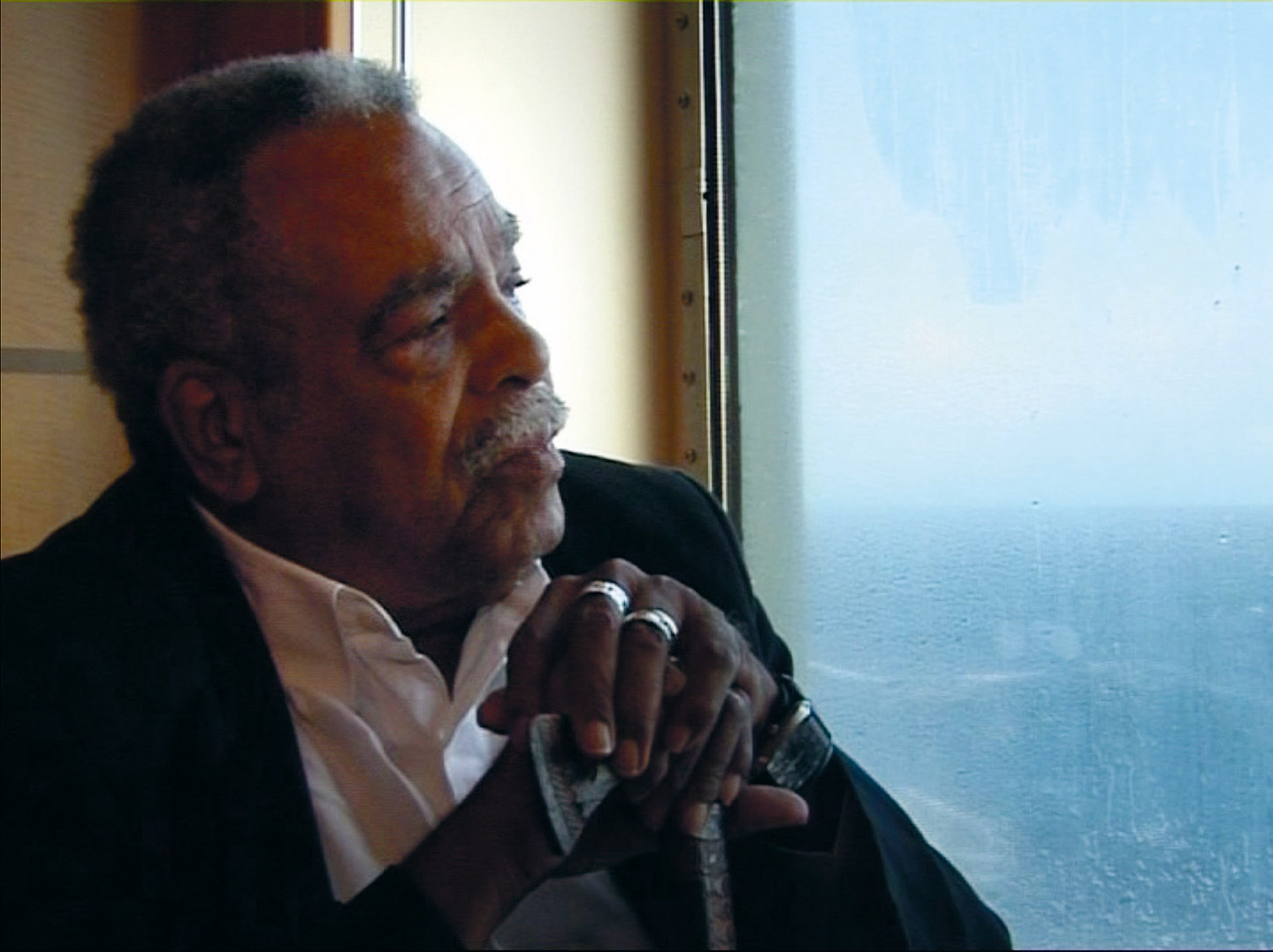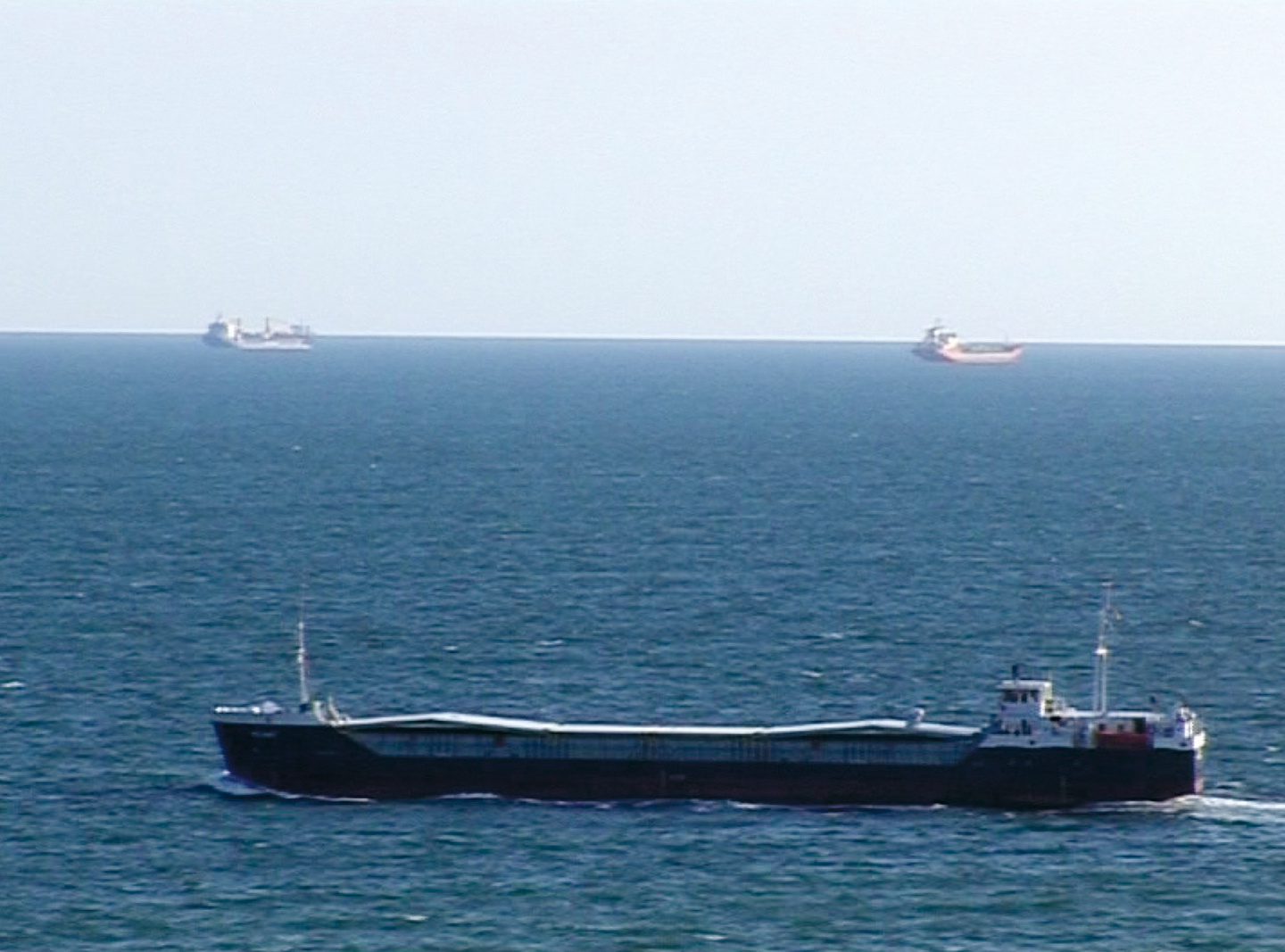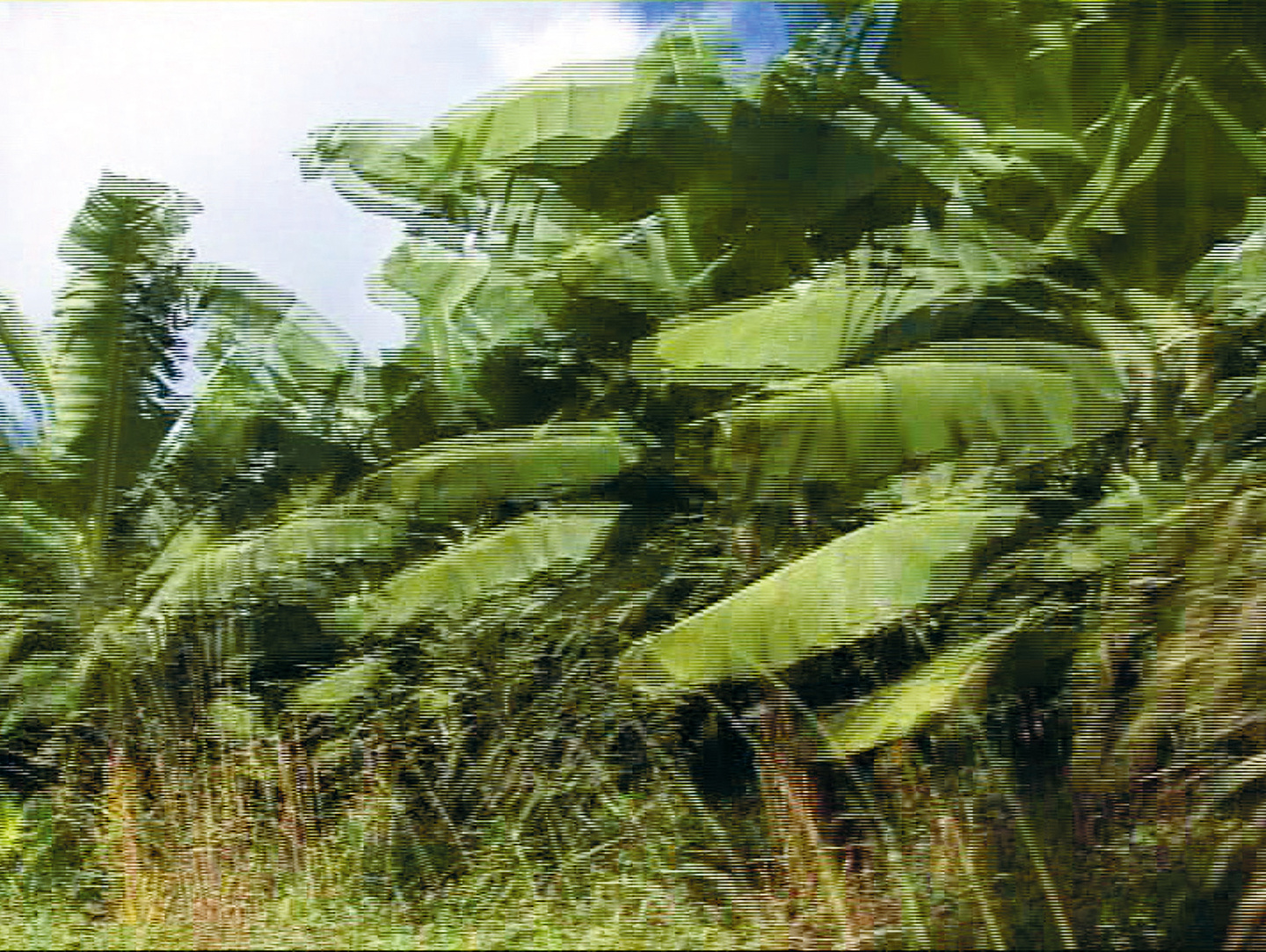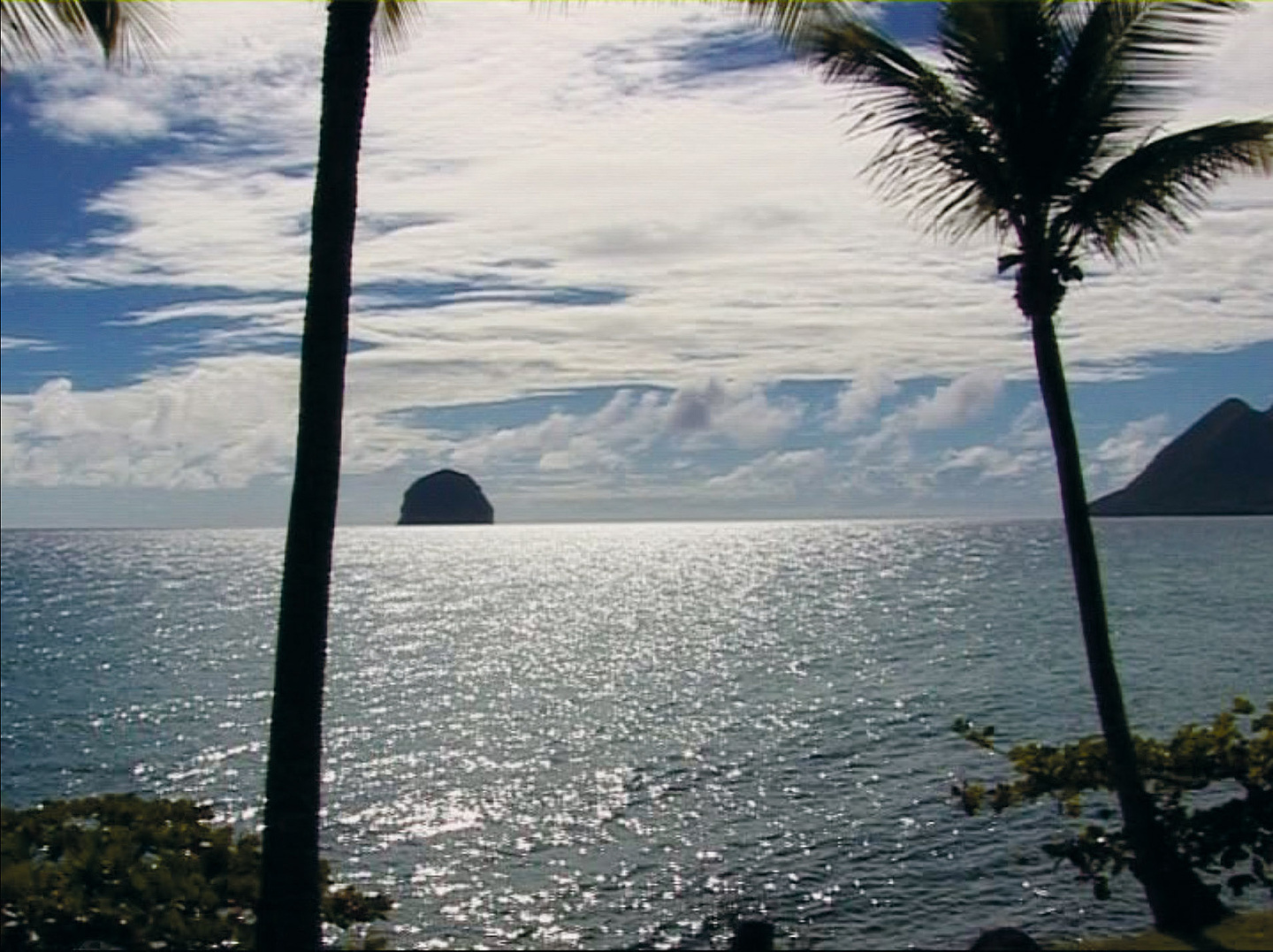I was now more than anxious to meet our man from Mali, while at the same time hoping that he and I would not disappoint Glissant by exhibiting an exclusive ethnic identity (our Negritude), or by being too exotic (authentic-indigenous people according to anthropology). After greetings and introductions, Glissant left the Malian man and me in the room, as if to give us our privacy. The man was about fifty years old, dressed in a traditional blue long-sleeved gown, with gold embroidery around the neck. His name was Mamadou Soumare, and he told me that he had insisted on meeting me for only one reason, which was to thank Glissant for all that he had done for him and his family, and, most of all, for including him in his “world,” as if he, Mamadou, was as learned and important as all the people who were there in the seminar room. He said to tell Glissant that even though he, Mamadou, spoke only elementary French, he understood what everybody was saying in the conference. He repeated that all he wanted from me was to thank Glissant on his behalf; he didn’t want anything else.
Mamadou and I said good-bye in Soninke, our mother tongue, and he ended the ritual by praying to God to bring us more peace for the rest of the evening. I can still see him, in his blue gown, mixing in the crowd on the Bouelvard Saint-Germain, and disappearing into the Métro at the Rue du Bac. As I said, I was at first anxious about meeting Mamadou Soumare because I was not sure what would be expected of me, both from him and from Glissant. I did not want to disappoint the one or the other. Now I realized that they both wanted me to relay a message to the other, that they were using me as yet another pathway, not a cleared road, but the trace of one, for their relation. I had become another layer in their opaque manner of relating while communicating. What I first thought was a chance meeting between two people from Mali, attending a conference in Paris, had been completely orchestrated. I can see now that Glissant had magisterially simplified the illustration of his concept of intuitive relation, which he wrote about in a very poetic, complex style in Philosophie de la Relation. He wanted me to take back to the United States something that could not be taught in a textbook.
Just the day before, Glissant and I had been talking about my film project at dinner with Agnès B., the French fashion designer who was an admirer of his work. During our meal, Glissant had criticized what he called the transparency of the cinematic image, and the systematic and dogmatic stitching together of shots to make meaning. For him, what was left out of the frame was as important as what was revealed. Good films for him were those that self-consciously played with showing as a form of disguising, those that reveal by deferring meaning, as if to show that by giving an identity, they were deliberately hiding its otherness.
I had taken advantage of that discussion on cinema to ask Glissant if there were ways to simplify his ideas for a wider presentation in American universities, and if my film might be one of the means of that effort. He answered that his ideas were already simple; what was needed most for the Americans, and many French people, was to change their frame of mind from one of globalization to mondialité, or worldliness. He suggested that we needed to enter into a state of world and mind that was less prone to discovery and conquest, and to espouse a philosophy of relation that looked at our differences not as that which divide us, but which link us individually and collectively in the Tout-Monde, where the communication between our intuitions knew no frontiers of language, territory, or power. As for my film, Glissant said, looking at me and smiling, if he were I, he’d wait until we were in the middle of the Atlantic Ocean, and point the camera at the mass of water, its abyssal expanse. That would be the whole film in one shot, for him.
Ironically, the next day, Mamadou Soumare would tell me to relay to Glissant that, even though his French was rudimentary, he understood what the philosophers and poets at the conference were saying. Could that be what Glissant meant by entering into worldliness, by attempting to understand the Tout-Monde by approaching it as an opacity instead of as a transparency? Could that acuteness of Mamadou Soumare’s intuition be as eloquent and as sharp as our mastery of the French language? As Glissant notes in Philosophie de la Relation:
The greatness stems from the intuitive equilibrium (individual or collective) of the relations with the Other, when it is a question of one country with another, and elsewhere from the acuity of a perception of a world esthetics, the protector of views of balance or breach [in the harmony of these relations], when said aesthetics moves between one culture of the humanities to another: equilibrium and acuity, intuition and perception, all sustained within equal ratios.
My brief meeting with Mamadou Soumare was the moment of my repositioning myself in regards to Glissant’s texts. Prior to that, I had been reading him, not unlike most readers, as a theorist of postcolonial, Black Atlantic, minoritarian, and oppositional studies. As such, I considered his collection of essays Caribbean Discourse (1989), for example, as a treatise of post-Negritude criticism. Seen by many as the launch pad of the Créolity movement, this book also introduced the Black studies field in the United States to rhizomatic thinking, African diaspora studies, and métissage. Now I felt, however, that continuing to read Glissant simply in the lineage of postcolonial theory was to position him as an oppositional theorist instead of one of relation. For example, if we were trained to look at the concept of difference in oppositional criticism as being against a meaning or an epistemological construction of the other, a rereading of Glissant would compel us to approach the concept differently, as that which assembled and related the diverse elements of the Tout-Monde, including those that are invisible to the sight.
Now, with Glissant’s new insights, we have to take for granted that every “truth” and every “reality” did not just come to us as the regimes of scientific deduction and transparency would like us to believe, but that some of their manifestations come to us intuitively, like a sparkle of light in the dark. By asking us to look at difference differently, Glissant wants us to realize its essential role in the construction of the Tout-Monde. To paraphrase Glissant, we must not surrender to the partitioning of the world, nor to irreconcilable differences, binary divisions, opposition of species, and genres. We must fight the desire to divide ourselves into threatening diversities, which remove any sense of poetry and imaginary from our differences. The sparkle of truth and reality must not be isolated from the darkness and opacity out of which they emerge. Glissant was in no doubt that postcolonial discourse, like the master narrative of Eurocentrism that it opposes, has equally evaded this opacity, in order to reach easy conclusions. He felt this discourse took the side of reason against poetry, transparency over complexity, and thus contributed as much to the destruction of lives and the environment (nationalism, for example, leading to violence and immigration), as did their former colonizers and now economic and cultural oppressors. Thus does Glissant keep reminding us:
Let us never forget: that the poem was entombed in a collapse of the earth. By habit, rather than commodity, the singularity and multiplicity of things were presented as divided couples and dualities, before the genres and species were discovered. This cadence allowed for a better distinction between things (we still think and react in this dual manner, and often take a surprising pleasure from it). But we’re also waiting for the renewed perception of differences to reveal themselves as such, and for the poem to reemerge once more.



